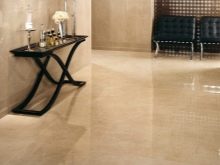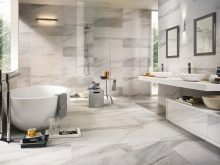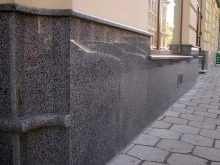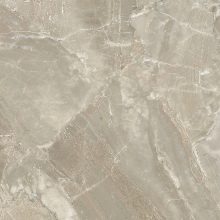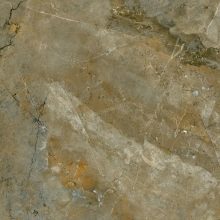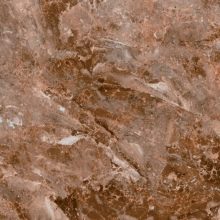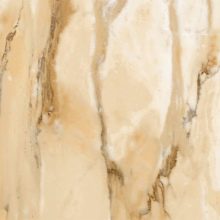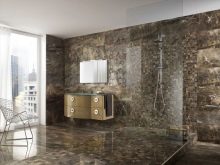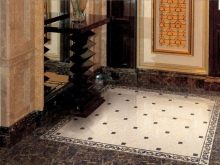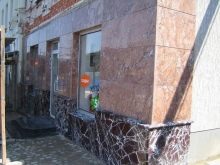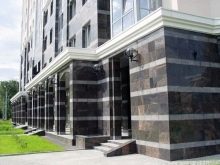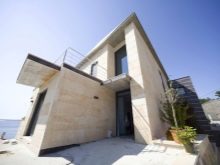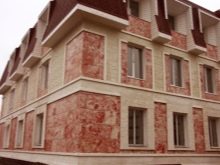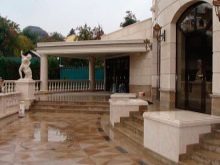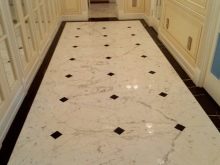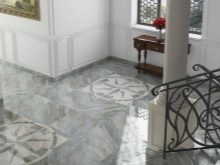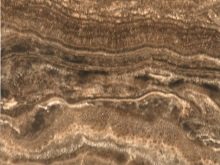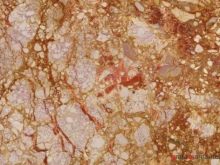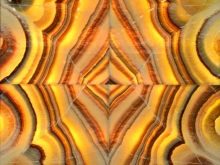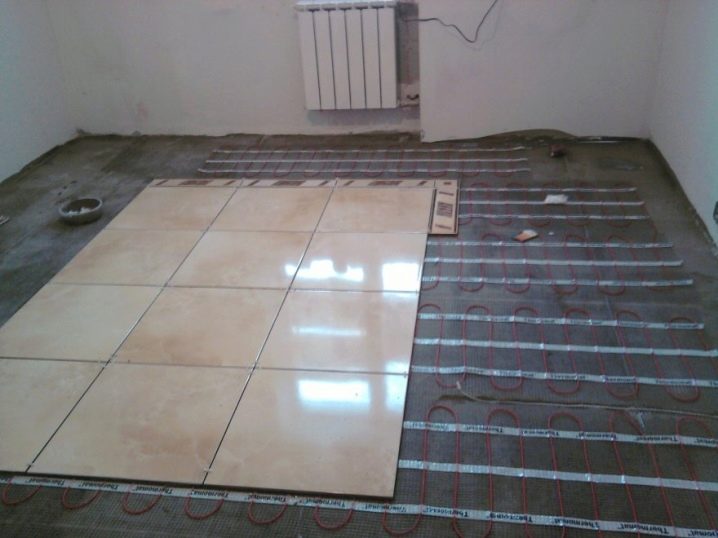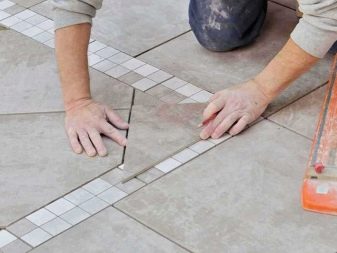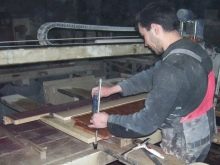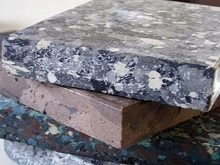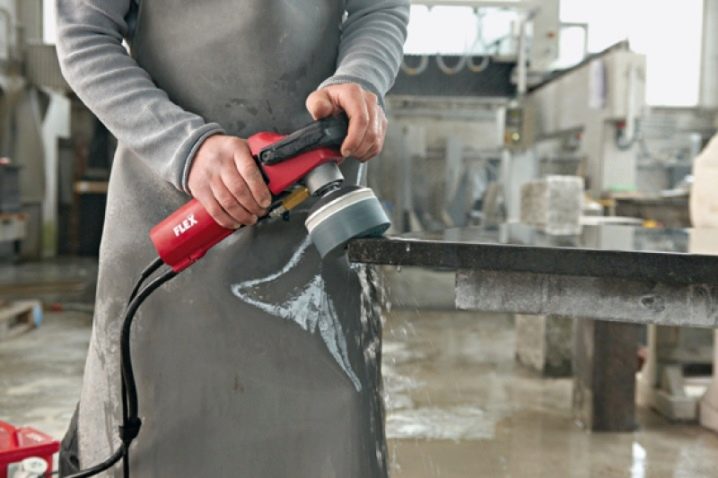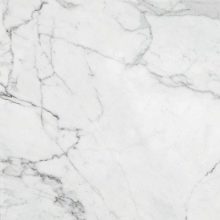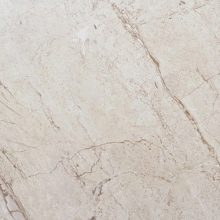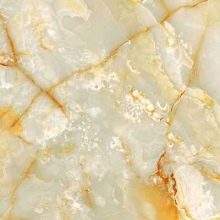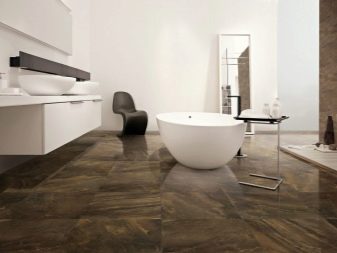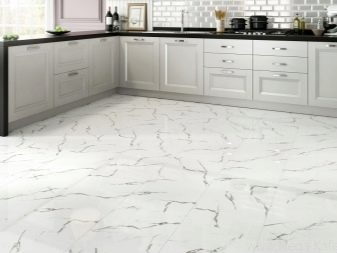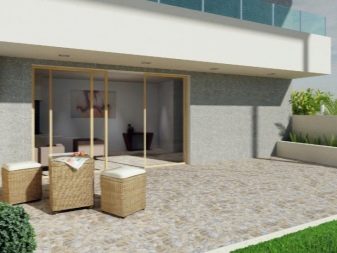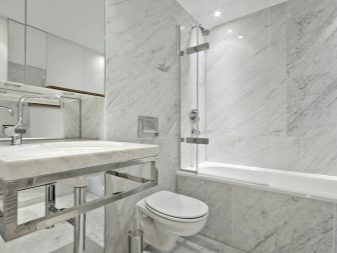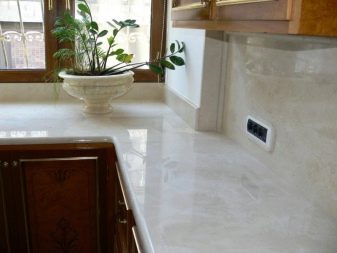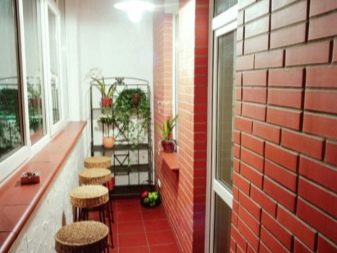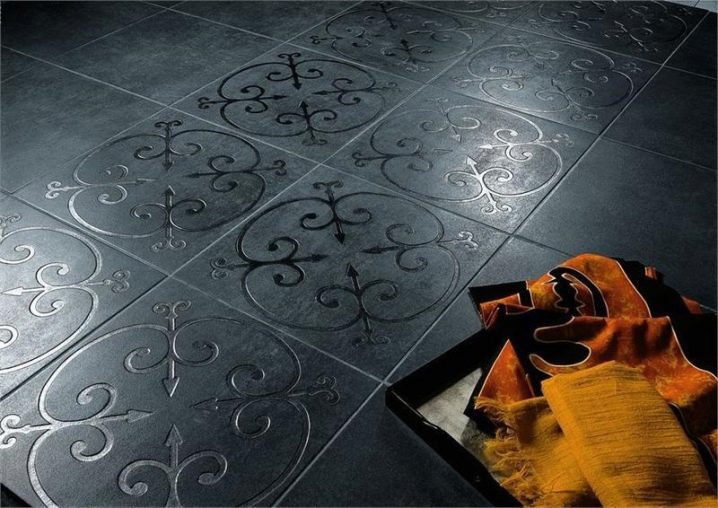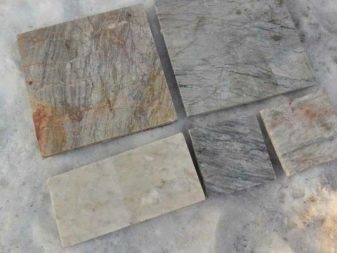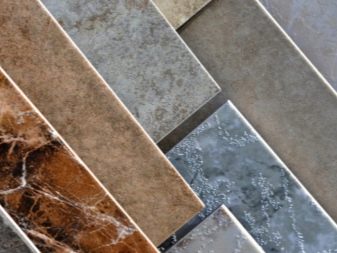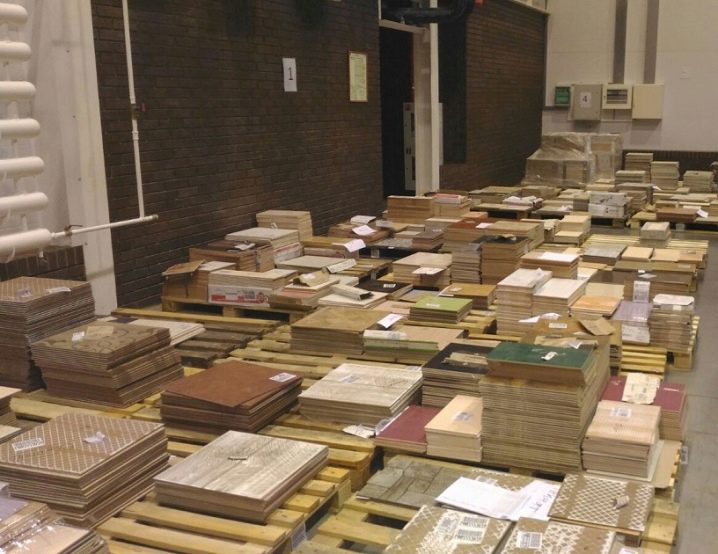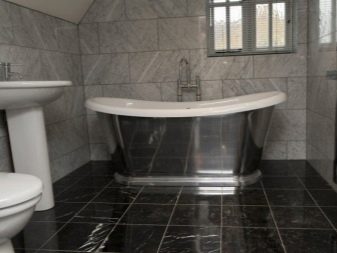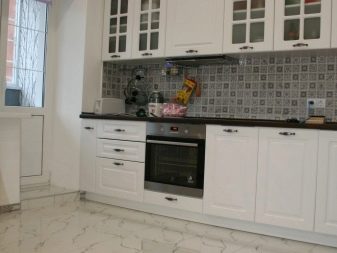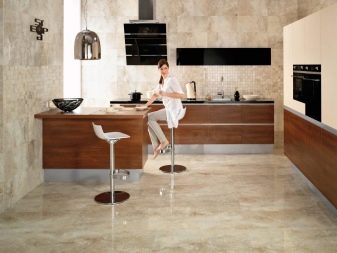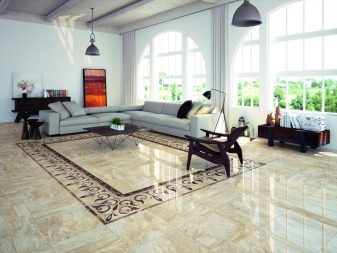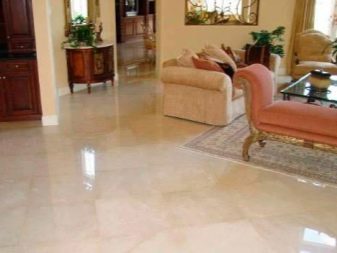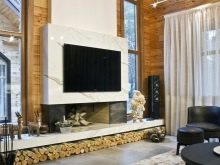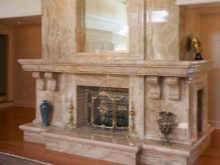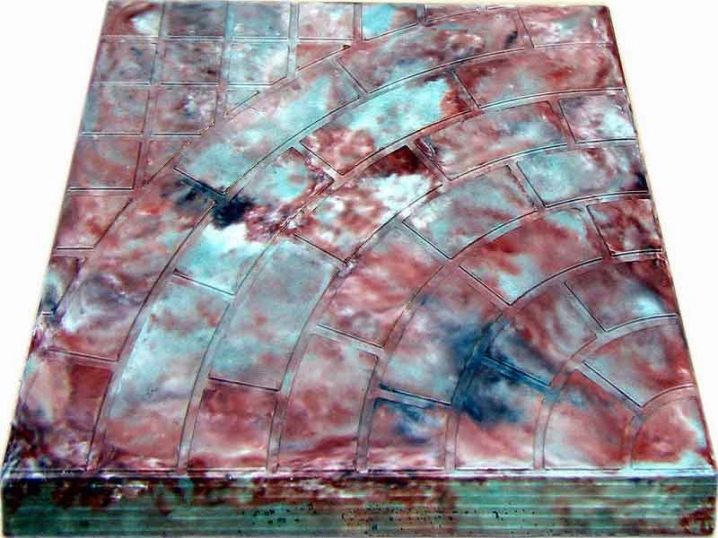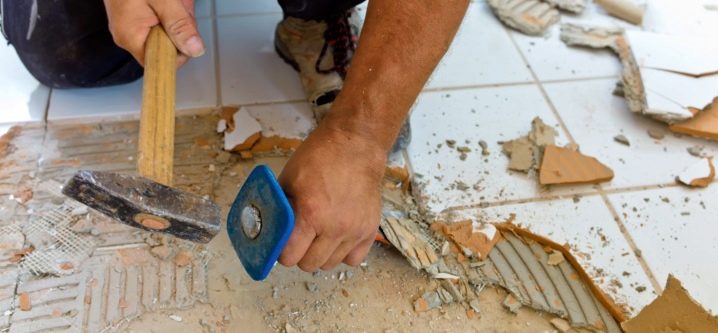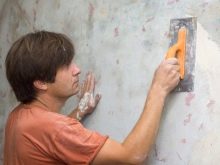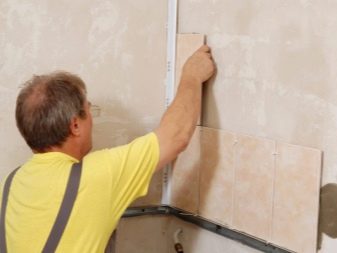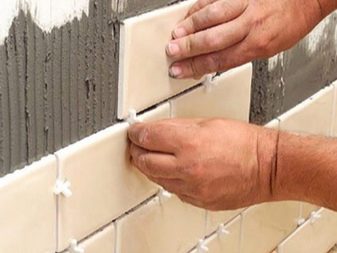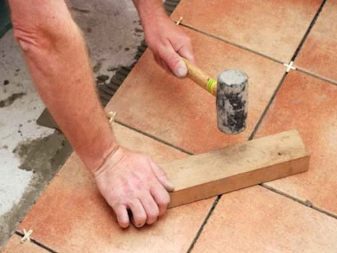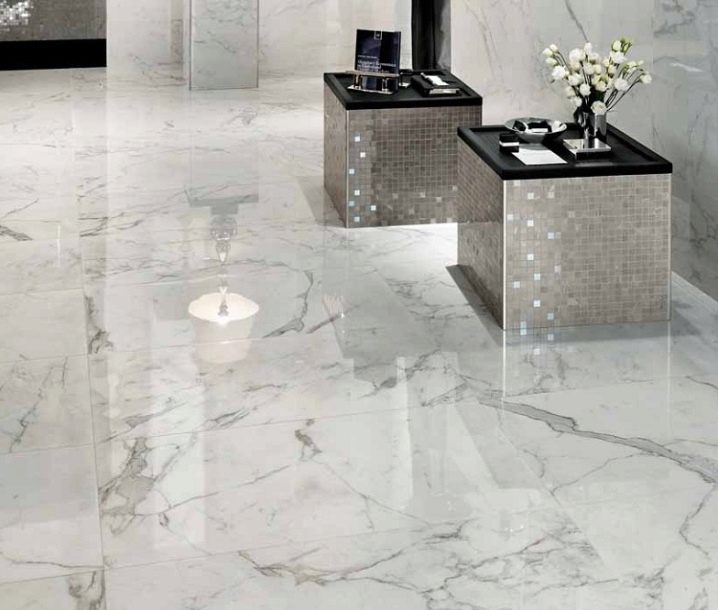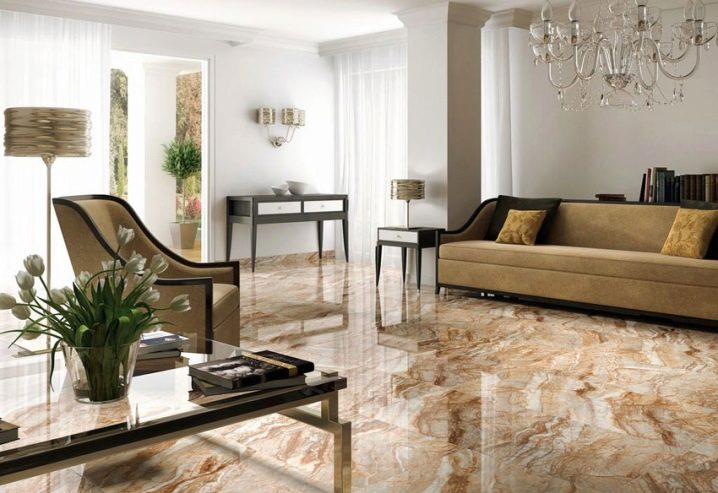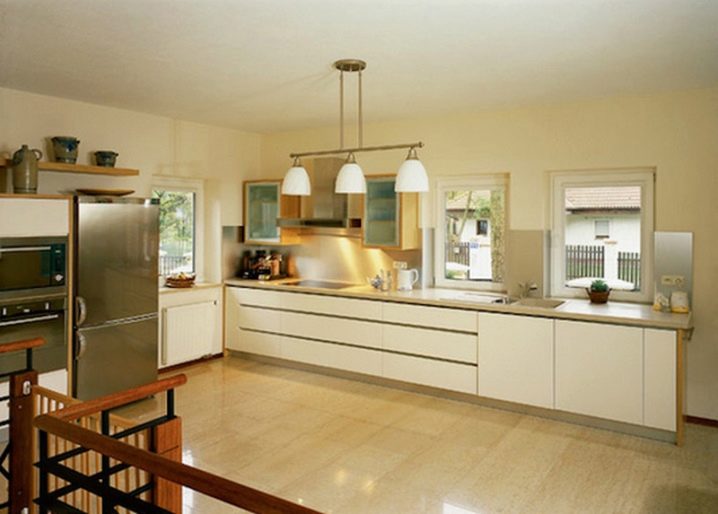Marbled tile: characteristics and advantages
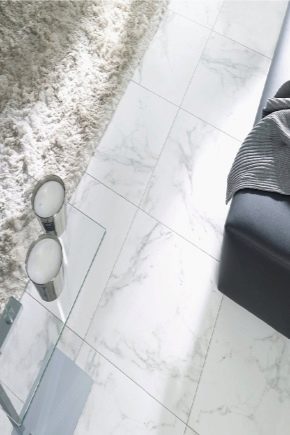
Marbled tiles are a type of fashionable and beautiful porcelain stoneware. The material is not inferior in many properties and characteristics to natural stone, granite chips and special coating mixtures are the basis of the composition imitating marble. This easy-to-use material allows you to create harmonious interiors, revet the inside and outside walls of houses, install stylish floor coverings.
Special features
The natural stone, which has a unique pattern, has been decorated by palace halls and rich interiors for centuries. Stone coating (granite or marble) looks status and is associated with luxury and good taste, whether it is facing the walls or flooring for the floor.
But in ordinary houses and especially in small-sized apartments, to apply a coating of a valuable stone, which requires long-term processing, time-consuming, labor and money.
It is much easier and more convenient to replace the capricious granite and marble with reliable artificial plates. The material imitating a natural stone under marble possesses the properties and features necessary for long-term operation without loss of an attractive elite look.
In order to repeat the impression of chic from the stone-decorated interiors, designers from Italy in the 70s of the twentieth century developed and applied a ceramic analogue, called ceramic granite. This is an unusually hard material that is produced under conditions as close as possible to natural ones, so the composition practically does not differ from the same-name stone mined in natural deposits.
To the delight of designers and owners of stylish interiors, in a variety of types they press and burn ceramic tiles, very popular in interior design, to be marbled - the legitimate leader in the design of any type of room space.
Porcelain tiles of this type are especially good in that they are able to replicate the rich palette of colors and textures inherent to many. including the types of marble lost in nature.
Advantages and disadvantages
Marble ceramic imitation has a number of notable advantages, including over natural material. It can be covered with any surface, internal and external. The latter are constantly exposed to physical and chemical destructive factors.
Artificial marble is able to demonstrate clearly even during long-term operation:
- Durability and strength. The method of producing tiles allows you to increase hardness to values comparable to one of the hardest natural crystals - quartz. 100% moisture-resistant marbled ceramics are almost never damaged. No cracks will appear on it, porcelain stoneware and exposure to severe frost up to -50 degrees Celsius, many freezing and thawing cycles, as well as incessant rainfall in the form of rain and snow are not terrible.
If the tile is lying on the floor, it rarely wears off. Moreover, the increased hardness allows the marble coating to maintain a full-fledged texture and stability on the floor and walls for many decades.
The load per square meter can be up to 25 thousand tons, and artificial granite can withstand it. Therefore, in those places where people constantly go - in halls and trading rooms, libraries and other institutions - it is laid ceramic granite, since it is economically justified.
- Decent appearance and ease of care. The real rare types of stone on Earth, in the fields of South America, Iran and Asia today have already been significantly depleted and therefore are not mined in sufficient quantities for construction. It was possible to repeat the unique pattern for the tile in all its variety with the help of modern technologies for producing artificial marble. On a cut, the material is homogeneous and non-porous, without inclusions and microcracks, characteristic of it in nature.
Imitation does not need long polishing like natural stone, is not afraid of being absorbed into the structure of liquids and oils. Reliable and durable composition of special care does not require. Thanks to the latest production technologies, an interesting and unique pattern can be applied separately to each tile.
- Excellent thermal conductivity.The material is suitable, thanks to this property, for arranging underfloor heating. At the same time, marbled tiles do not conduct electricity, being a good insulator of electrical current.
- The tile does not burn, it refers to resistant refractory ceramic materials. Not afraid of exposure to sunlight, does not fade, after decades, does not lose its original shade.
- Comparative low cost. The price of artificial marble is about ten times lower than the natural original.
- Ease of installation. Installing a marble coating of ceramics on the surface of walls and floors is much simpler, since ceramics does not crumble or form chips.
This often occurs while working with fragile and softer natural marble.
Species
Ceramic marbled tiles are made from the moment of invention using a specially developed technology. Thanks to the knowledge of all the subtleties and careful adherence to technology, it is possible to obtain and improve a multicomponent composition that preserves the unique properties of the stone.
Granite natural crumb, forming the basis of the created material, is thoroughly crushed and mixed with the other components.Then, under the press, the plates become uniform and flat, and at the last stage they are burned in a furnace at a temperature of more than 1000 degrees Celsius. Surface texture is set on the plates at the pressing stage.
For tile with a pattern and seamless texture requires several stages of grinding. For expensive unique samples using precise grinding on modern equipment.
Porcelain tiles can be divided into such varieties:
- For the floor;
- For wall panels;
- For finishing of external surfaces and pools, balconies and terraces.
Available in three types of ceramic marble, depending on the surface: matte, lappatirovanny or polished.
Their degree of grinding differs from each other. Additionally, the outer layer is removed from the surface when processing colorful polished tiles. Therefore, it is thinner than other types.
Matte and lappatirovanny tile harder, they do not slip, have a more dense texture. Thanks to its resistance to moisture, it has proven to be an indispensable flooring in the bathroom and in the kitchen.
If there is gloss on ceramics, then it has been thoroughly polished., and in the manufacturing process salts of minerals were added. Polished finish is more suitable for walls, because the strength of the tile is slightly lower due to the appearance of porosity of the material.
Open spaces, such as facades and terraces of houses, require hardened tiles that can withstand low temperatures. Manufacturers mark these products with a special icon - a snowflake.
Colors
The color shades and texture of the plates are set in a mixture with granite chips from the very beginning and appear on the tile at the end of all production cycles.
A multicolor unique combination results from the following steps:
- The first initial pressing.
- Applying a special shade blend to the plates.
- Repeated, final pressing to a flat state.
- Roasting in the furnace at ultrahigh temperatures (approximately 1300 degrees).
Rough or frosted tile makes a mixture with different chemicals. After its application and strong firing on the ceramics, streaks or a given pattern appear.
As for color preferences, this is an individual choice of the owner of the interior.Knowing the features of the visual perception of such materials, designers recommend: in bathrooms and kitchens it is better to use light tiles for laying - beige, pink and white-yellow, playing gold streaks under white marble.
For the decoration of balconies and terraces, as well as all the facades of buildings facing the street, black marble is suitable material; a combination of dark brown and black with white is in vogue, creating the effect of a “chessboard”.
It looks good on the balcony and terrace blue and orange, attractive and bright red tiles.
The coolish color of marble will give a feeling of increasing space, make your interior more calm and peaceful.
Green and blue with an emerald shade is perfect for the office, hallway or corridor.
Dimensions
You can choose the smallest tile of 20x30 cm for the house, as well as the medium one - 30x30, 40x40 and 45x45 cm. Such small marble units are used mainly for walls. For the floor go to the finish widescreen views, in which one side is linearly superior to the other - two to three times or more.
Often, large rooms with a large surface area of the floor, covered with impressive and solid in size marble plates.A large-format tile has a size ranging from a square with a side of 600 mm to 1200x600, 1200x1200, and even 1200x2400 mm.
How to choose?
The choice of fashionable ceramic tiles on the market is truly huge, with a considerable assortment amongst marbled products.
To purchase a suitable option for the walls, you need to assess the nature of the room, the height of the ceiling and the area of the surface to be covered:
- For small interiors, plates of medium and small size are usually used. The larger the area, the larger the tile size.
- Typically, a variety of marbled ceramics decorate the bathroom and kitchen. Here you can fully express your imagination during the design, since it is advisable to tile these rooms completely - the working area in the kitchen, walls to the ceiling and the floor surface.
Even a modest hall or entrance hall, decorated with a decent marble pattern, will get a beautiful and unusual look and will attract the eye.
- A wall tile of elegant design with an inconspicuous color scheme is intended for office space, the combination of various textures looks good in the kitchen. It is not customary to clutter up the kitchen with unnecessary objects or bulky accessories, it is better to give the opportunity to visually expand the space, emphasize the marble pattern on the plates.
Carefully selected in color and style kitchen set complement the overall impression.
- Shades of white, as well as other light and neutral tone combinations are universal, therefore they are in demand among buyers.
Avoid in the interiors to use lemon and scarlet shades in the headset items. They can cast unaesthetic shadows on marble. Next to porcelain stoneware, complex and excessively catchy elements are not needed.
- Decorative marbled tile, made in white and beige shades and pastel colors, is known for its elegant appearance and versatility. The pattern with the active pattern absorbs all the attention of the viewer.
To enhance the positive impression, experts advise in the interior to stick to chocolate and brownish tones for furniture, cocoa flowers and coffee with milk. Monochromatic slabs with relief will make a harmonious and at the same time non-standard combination with marbled materials.
- The refractoriness of the material is an important characteristic of the tile, along with thermal conductivity. For the fireplace, such luxury as beautiful ceramic tiles has become a worthy decoration.With the advent of marbled species, the owners of private houses have the opportunity to turn the fireplace into a work of art.
You can make a fancy inlay or panel, lay out the tabletop. And also do it yourself imitation in marble, if the tile is old, and the task is not to change it, but to update it a little.
- A simple and successful solution in order to change the look of an outdated tile will be painting it with spray paint in “Spider web” cans. The paint is perfectly sprayed, a brush and a damp sponge are used to draw the lines. For a start, the tile is painted in a monochromatic color, the lines draw a dye of a lighter tone, getting the effect of a marble surface.
Styling details
To lay a new tile, you must completely remove the old one, then scrub the surface thoroughly.
In order to proceed with the installation, the plane is completely degreased, cement screed and leveling are needed on the floor. Wall panels align and primer. Then you can begin to lay artificial marble.
Here are a few highlights to help with your work:
- To use the entire tile, including trimming, usually the first row is made of them, if you do not need to observe symmetry when decorating tiles with a pattern.
- Before laying you need to calculate the number of horizontal rows. It should be borne in mind that the width of the seam between them should be at least 3 mm. Thus, it is easy to determine the exact amount of marble plates needed to cover the entire surface.
- In the places of the beginning of the rows, profile bars are strengthened so that the horizontal is not disturbed.
- Crosses are placed between the tiles so that the seams are even. Subsequently, these latches are removed when work is completed. The small remaining gaps are overwritten with specially designed composites.
- If the floor is covered, the plates should not move away from the established horizontal line; on the walls, strict vertical lines are observed. A soft rubber hammer is used to add edges to the line.
More clearly about the laying of marble tiles you can see in the next video.
Interesting options in the interior
Hall with floor and wall covering of white polished marble with gray veins.For tables, two decorative cubes with side surfaces covered with a small gray mosaic structure are used. Countertops for the phone, as well as gadgets and other accessories are made in black.
Beige marble pattern in the bathroom in combination with a panel with an ornament in the form of leaves of the same color. Staggered stacking is chosen for the floor - large light-beige rectangles in combination with small black squares. Complete the design solution niches with shelves of glass, decorated with chess ceramic mosaic.
Large living room with marble slabs. Material with brown and white stains, a sofa and a chair indoors are decorated in tones of coffee with milk and chocolate edging. A table with a glass top and metal legs to match the cushions on the sofa. The interior is supplemented with gray tables, lamps and floor lamps with golden-beige lampshades. Glass chandelier with metal elements.
Kitchen interior with elongated proportions, with marble gloss floor tiles. Rectangular tiles in soft coffee colors, the walls are painted in the same shade.For the frames on the windows and the table, a bright white color was chosen in the headset, a hanging chandelier with three white shades. Shelves above the table of light wood.
